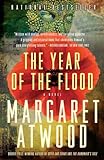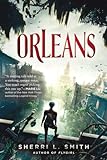Why on EARTH would ANYONE want to read about a plague-induced apocalypse in the middle of an actual, very real pandemic, you ask? I have enough anxiety, you say. Won’t reading about it just make that worse, give me more sleepless nights?
Personally I find reading MORE fictional accounts of various plagues kind of calms me – either rightly or wrongly, survival accounts of anything surmounted usually make me feel better…and in the case of those stories where most of the world’s population is wiped out, I definitely would prefer that didn’t happen, but the idea of starting over is quite appealing as well!
Back in mid-March, when quarantine began, I decided to lean into the pandemic by re-reading my very favorite postapocalyptic plague novel, (The Stand) and thought I’d include some of my other favorite, plague-specific novels here. I’ve read all except the Atwood book within the past year.
(Note: links to where you can get these novels for yourself may be affiliate links.)
The Stand – Stephen King
This is, to me, the gold standard of ALL postapocalyptic novels. Some people might be daunted by its length (over 1400 pages in the uncut version), but it allows King to really go deep into the hearts and minds of most of the main characters. The book starts with Charles Campion, who flees a secret, underground bunker in California in the dead of night with his family, after a severe mishap – a plague jar is accidentally released, and so potent it immediately kills everyone on the lower levels of the bunker. Campion sees all this in the surveillance cameras and makes a break for it, stopping just long enough to get his family, throw a bunch of things into a suitcase, and barely escape the compound. Several days later, he arrives in Arnette, Texas, where he crashes into some pumps at a gas station where we meet one of our first main characters, Stu Redman who, with other Arnette townies, call an ambulance when they discover all Campion’s family dead in the car and Campion himself barely hanging on. We follow Stu through watching all his neighbors start to get sick, to when the government moves in and whisks Stu, everyone who was at the gas station that day and their families away to the CDC in Atlanta on a military plane. And from there, the entire world is brought down within a matter of a couple weeks. We also meet several other main characters amongst the immune, including Frannie Goldsmith, a pregnant coed from Maine and her best friend’s brother, Harold; Larry Underwood, a musician whose first single is just starting to climb the Hot 100 charts as the Superflu goes into full swing; Nick Andros, a deafmute vagrant; The Trashcan Man, an unstable pyromaniac and of course, Mother Abigail, a 108-year old woman whose parents were freed slaves who is basically the hand of God and Randall Flagg, the Devil’s Imp. These folks and others are essentially chess pieces in a game between good and evil, and there is a spectacular, final reckoning.
The Immune – David Kazzie
The Immune is, in many ways, similar to The Stand, in that the malady befalling humanity wipes out nearly all of it, but it differs in that it was put out to the population on purpose, and the malicious elements are human rather than supernatural. The book, in fact, starts with one of the scientists who created the bug sitting in a restaurant and waiting for word that the plan has been carried through. He enjoys what he realizes will probably be his last good steak for awhile, and feels pity for the other restaurant patrons who will soon be dying…because he has the antidote, and has distributed that only to the other folks in a compound in the Midwest who are helping spearhead his project. Similarly, the story follows the lives of the main characters, immediately before the pandemic and how the naturally immune survive afterwards, but back in the Midwest compound, they discover that everyone who’s taken the antidote is also sterile, so they can’t actually re-create humanity within the compound, but have to go out and basically abduct naturally immune women of childbearing age. This book is part of a series – I haven’t yet read the books that follow, but I definitely plan to at some point! I took this one with me to South America in December, and as a travel book, it didn’t disappoint – was easy to read, and kept me turning the pages, even on many a long plane ride!
Year One – Nora Roberts
This was another airplane book for me when I travelled to North Carolina from Seattle last summer. It starts with New Year’s Eve in England, a man goes out hunting and kills a pheasant. He then travels back to New York with his family and a case of the sniffles. As in so many other plague novels, we see this one through the eyes of the immune…except some of the immune can now do magic. While this story follows several of the immune, the main protagonist who emerges is Lana Bingham, a survivor with newfound magical powers who flees New York with her boyfriend Max, who already had some magical powers but has seen them increase. As the remaining survivors eventually come together in a small town and attempt to forge a new community, it’s increasingly clear there are magic users who want to rebuild a new world with their powers and of course, those whose intent it is to destroy. When these malevolent survivors approach the burgeoning new community, Lana realizes she must leave for the safety of all those in the town – she has become pregnant during the course of the story’s events, and the dark magicians want to destroy her baby…who might be just be the foretold savior of humanity. This was a quick and entertaining read – Roberts’ writing, while not particularly complex, is very readable and I had no problem devouring it over the course of my 5-days’ journey to NC and back. It’s also the first book in a series that focuses more on what becomes of Lana’s baby, which I haven’t yet read, but it’s waiting for me under a stack of other books I need to read.
The Year of the Flood – Margaret Atwood
Doing something a little different by proffering up the second book in a series, rather than the first (Oryx & Crake), as this one delves a little more closely into the actual plague outbreak, and to be fair, the first two books in the series can probably be read interchangeably, as they are different perspectives of similar events from different characters, rather than the second being a continuation of the first…and the third (MaddAdam) is a continuation of both stories as the characters diverge. This one is told from the perspective of two working class characters, Toby, who is barricaded within a luxury spa and Ren, a sex worker locked in a biocontainment unit at the nightclub she works at as the pandemic begins. Much of the story is told in flashbacks of their earlier lives and how they originally met as members of a religious sect called the God’s Gardeners, looked at by outsiders as a kooky cult, but who feel the “Waterless Flood” (the epidemic) is imminent and are preparing for its arrival.
Orleans – Sherri L. Smith
Just finished reading this one, and while it’s not end-of-the-world postapocalyptic, there are definitely strong elements.
The premise: after several huge hurricanes battered the Gulf Coast, wiping parts of it clean off the map. The ensuing floodwaters brought with them Delta Fever, on top of the already awful conditions. In an effort to curb the spread of the disease, the US disowned all the gulf states and built a huge wall to cut them off from the now Outer States of America. The cut off area is simply called “Orleans”, and Fen De La Guerre grew up there afterwards. The book takes place about 20-25 years after the cutoff (which occurs in 2025). People are living in tribes by blood type in Orleans, as some blood types are more susceptible than others to Delta Fever.
Want to stay updated on all things post-apocalyptic? Join our email list here.






